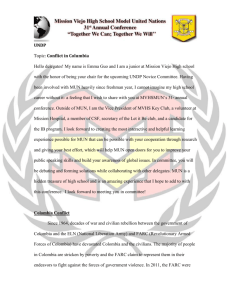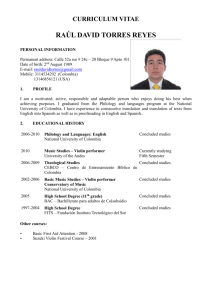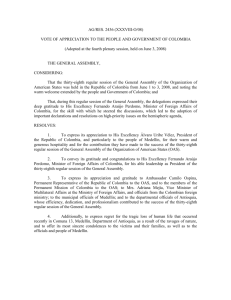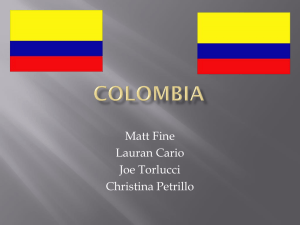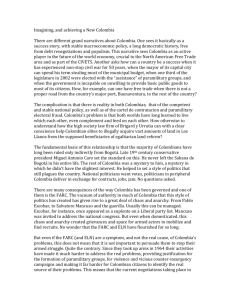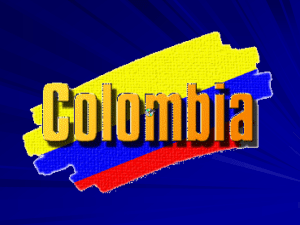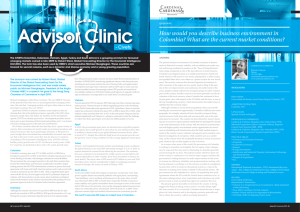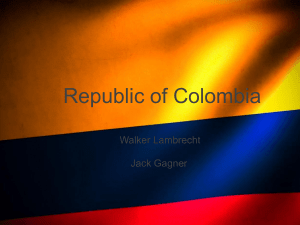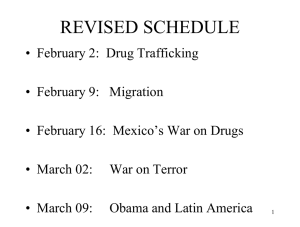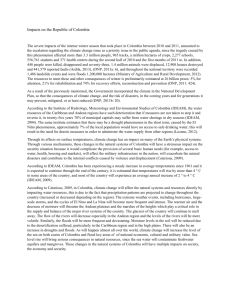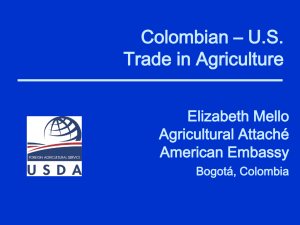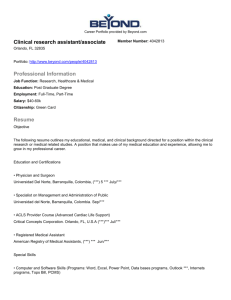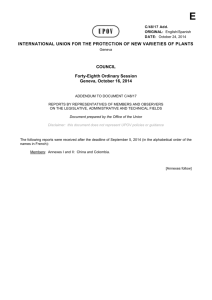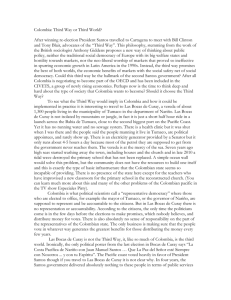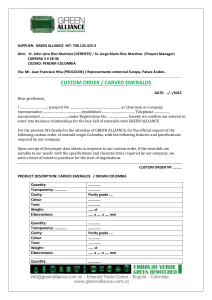Living with the U.s. Plan Colombia
advertisement
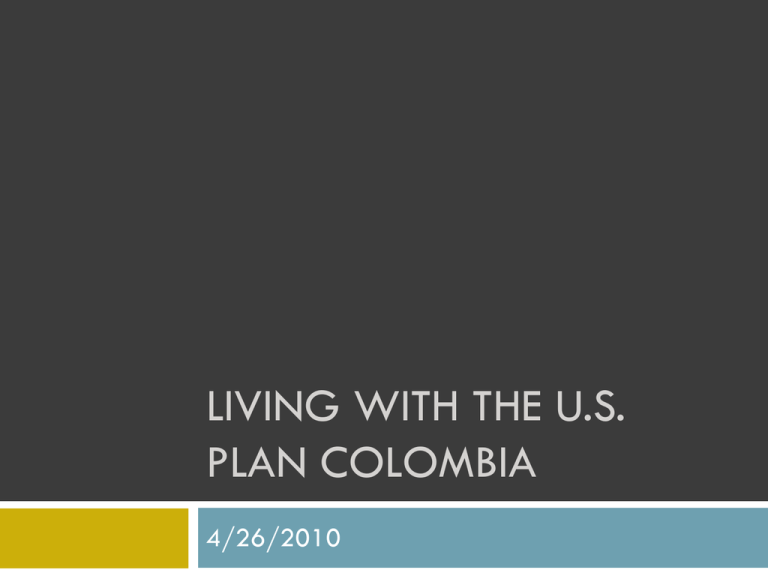
LIVING WITH THE U.S. PLAN COLOMBIA 4/26/2010 The Latin American Drug Trade What should be the goal/s of drug policy? Reducing the supply of illegal drugs Reducing the demand for illegal drugs How do we measure success? Efficiency Completeness Public safety Humaneness The Latin American Drug Trade Supply and demand Major supply countries: Colombia, Peru, Bolivia, Mexico Major consumer countries: the United States, European Union Eradication Supply Alternative Development Repression/Interdiction Transit Financial Flows Criminalization Decriminalization Demand Public Health/Treatment Public Information The Latin American Drug Trade Problems Associated with the Drug Trade in Latin America Increased power and prevalence of organized crime Increase in drug-related violence The “criminalization of politics” – politics as a means of engaging in or furthering criminal activity The “politicization of crime” – crime as the subject of political debate rather than a rule of law issue Corruption: all three branches of government, the bureaucracy, police and the military Colombia: Background 1948: assassination of Gaitán; La Violencia 1953: military coup to end civil violence and end communist activities 1958: return to nominal civilian rule; military to ensure “public order” 1966: FARC, an explicitly communist group, is established 1970’s: cocaine production shifts to Colombia The end of la Violence and the beginning of counterinsurgency 1982: Cocaine is a USD$2 billion dollar industry in Colombia and represents more than 30% of exports FARC “taxation” of cocaine production 1981: Extradition treaty with the US is signed Colombia: Background 1985: M-19 seizes the Palace of Justice Deaths: 33 guerrillas, 11 security forces, 11 justices, 43 civilians 1986: Presidential Directive #221 (Reagan) makes drugs a U.S. national security threat 1979: M-19 begins kidnappings of the families of drug lords 1981: MAS forms 1982: Paramilitary groups form, merge with MAS 1989: La Rochela massacre (MAS); revocation of the 1965 law legalizing paramilitary groups 1990’s: FARC gives responsibility for local finances to local commanders; kidnappings increase 1993: Pablo Escobar killed What is “Plan Colombia”? A body of US legislation and policies aimed at ending drug production in Colombia and at weakening armed leftist groups An agreement signed by Pastrana and Clinton in 2000 which established U.S. aid for Colombian anti-cocaine efforts Initially Plan Colombia focused on ending civil conflict and on humanitarian and development aid The final agreement focused on counternarcotics and on military aid What is “Plan Colombia”? Goals: drug reduction and national security Counternarcotics Crop eradication Interdiction Alternative development Territorial Control Growth and professionalization of the military Military engagement Expanded police presence Aid Internally displaced persons Demobilization Judicial reform Poppy cultivation and heroin production declined about 50% Coca cultivation increased by about 15%; cocaine production increased by 4% FARC combatants decreased by about 50% What is “Plan Colombia”? Military as % of Total 80 % 99% 76% 80% 82% 82% 81% 80 % 64% 79% What is “Plan Colombia”? Myth: Planting coca improves the growers’ standard of living Myth: More coca means more forest, since other cash crops require greater area Myth: Fumigation will make immigrants who produce illicit crops return to their area of origin Myth: Illicit crop eradication increases consumer price thereby reducing demand Myth: Illicit crop eradication through aerial fumigation is environmentally neutral and it works Liliana M. Dávalosa; Adriana C. Bejaranob; H. Leonardo Correac. "Disabusing Cocaine: Pervasive Myths and Enduring Realities of a Globalised Commodity," International Journal of Drug Policy; 20 (2009) pp. 381–386.


